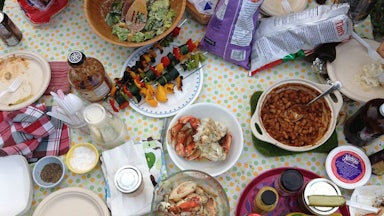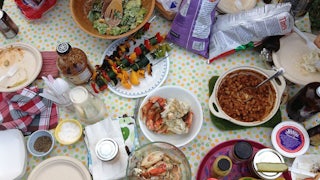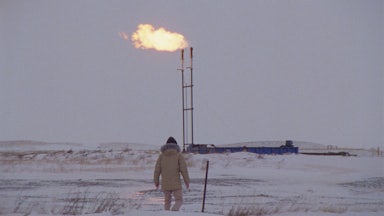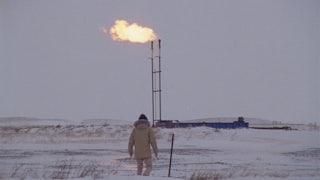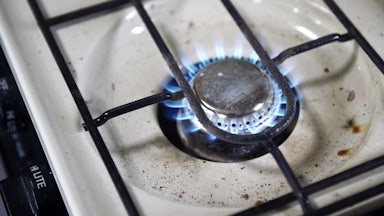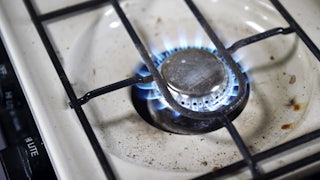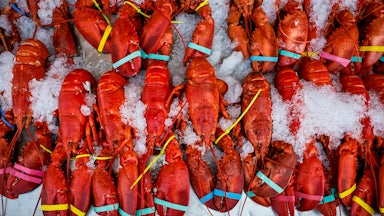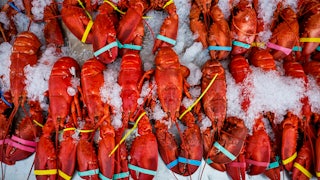This week, for the first time in months, I put on an N95 mask to go for a walk outside. Despite the threat Covid-19 still presents, that’s not why I masked up.
I live in New York City, where smoke from Canadian wildfires arrived this week to paint the skies a hazy orange. That’s the thing about air pollution: It knows no borders. Neither does the climate crisis, which is ultimately behind the dual public health and environmental crises these wildfires present. This week, New York City’s air ranks among the world’s worst. And it is particularly dangerous—and potentially deadly—for those most vulnerable.
Already, wildfires have burned about 9.4 million acres, Canadian officials told reporters Tuesday—about 15 times more than the decade average for this time of year. Though scientists rely on attribution studies to say with certainty whether rising temperatures from climate change are behind individual events, we do know that climate change is creating hotter, drier conditions that make wildfires more frequent and ferocious.
“Unfortunately, this incident is a reminder of how much more disruption we’re going to see in our climate and in our environment,” said Ana Baptista, an associate professor of environmental policy at the New School.
As a result of the smoke traveling south, my Queens neighborhood’s air quality index has skyrocketed into the worst zone the government reports: hazardous, which means everyone should stay indoors. The index operates on a scale of 0 to 500, using various colors to communicate the risk. On Wednesday afternoon, the index where I live read 392—a number that corresponds with a deep, alarming red.
As I mulled over the numbers, I thought of those who can become especially sick if they breathe in too much of this dirty air: older adults, children, pregnant people, and people with heart and lung disease. I also felt for those who can’t avoid the pollution: outdoor workers and people who are unhoused. These are what public health experts often refer to as “vulnerable groups.” Their bodies can’t handle the same level of exposure to pollution as the rest of us, so they’re more prone to hospitalization and mortality. This is why they need more protection and access to information.
“People should take action because when concentrations of air pollution reach very unhealthy and hazardous levels, we cannot predict who will be at risk of adverse health effects,” said Robert Laumbach, an associate professor of environmental and occupational health at Rutgers University. “We don’t want anyone getting seriously ill or dying from air pollution.”
Air pollution attacks the human body in several ways, Laumbach explained. With wildfire smoke, the primary pollutant is particulate matter. The particles themselves are made up of chemicals that are potentially harmful. They may also cause lung inflammation, which can spread to other organs. If particles enter the bloodstream, they may lead to heart attack and stroke. Even the brain is affected, though scientists don’t completely understand how or why.
In New York City, the most vulnerable also include low-income communities of color (especially Black and Latino children) who face higher levels of pollution year-round and, therefore, suffer from higher rates of asthma and other respiratory illnesses. In the South Bronx and Harlem, asthma kills and harms residents at some of the country’s highest rates.
I was shocked to see, as I walked through my neighborhood, that I was one of the few people covering their face. I saw mothers pushing their toddlers in strollers, neither wearing a mask. I saw an elderly man walking with his cane, a face mask tucked beneath his chin. I wondered: Do they even know?
When Elizabeth Yeampierre stepped out into the wall of smoke, she felt the weight on her chest. As the executive director of UPROSE, an environmental organization serving Brooklyn’s Sunset Park neighborhood, Yeampierre is well aware of the political and scientific factors that brought the bad air to her doorstep. But as a survivor of a pulmonary embolism, Yeampierre is also among those most vulnerable to poor air quality.
In that moment, as she struggled to breathe, she wasn’t an activist. She was another person the government had failed—another life the government was willing to sacrifice. (The wildfire smoke comes not even a week after Democrats in Congress approved the Mountain Valley Pipeline as part of their debt deal negotiations.)
“It terrified me because I felt really powerless,” Yeampierre said. “I felt like, coño, pero, aren’t they thinking about our babies? Aren’t they thinking about people who have endured a legacy of toxic exposure? Are these fossil fuel companies really this powerful that they’re eating up everyone, including people who are supposed to be our allies?”
It’s not just the outdoors that poses a risk. City officials have been urging the public to stay inside and keep windows and doors closed, but what about the families without air conditioning? Or the public housing residents whose buildings the city fails to maintain? During the Covid-19 pandemic, the city knowingly dismissed guidance to improve ventilation in buildings with clogged air ducts or broken fans. Air pollution sources aren’t only highways or industrial plants. For some, the source may lie within their own home: mold, cigarette smoke, gas stoves. With wildfire smoke added to the mix, those threats compound.
“Sometimes, just staying indoors and closing windows—if you’re in a housing situation that doesn’t have healthy indoor air quality or good ventilation—could actually be worse for you,” Baptista said.
Air purifiers can help, and Mayor Eric Adams urged residents to utilize them this week, but many low-income households are unlikely to own one—good ones can cost hundreds of dollars. Even air conditioners can be a luxury for some New Yorkers. In April, Governor Kathy Hochul announced a $15 million program to provide eligible households with a free air conditioner and installation, but so far, no such plan exists for air purifiers at the city or state level.
When I reached out to ask for details about any potential plans to provide air purifiers, a city representative pointed me to Adams’s press conference on Wednesday. While Adams said that the city was formulating a plan to distribute masks and that it “will do everything we can to make it easier for people to get the tools they need,” there was no specific mention of providing air filters. But that’s the type of government action Yeampierre wants to see happen.
“The city is putting out advisories,” she said. “The city’s got to give out air conditioners and purifiers.”
Outside my window now, my usual view looks like something straight out of my nightmares. It’s terrifying. But we can’t let fear win—even when the air reeks of smoke or when politicians negotiate our lives away to the polluters that created this mess. Fear means giving up. Fear is what compels us to accept dystopia as our new normal—and to allow the most vulnerable among us to suffer. Neither is acceptable.
Climate change is here—and it is hitting some worse than others—but that is a choice our leaders have made. It is a choice we, as a people, make by electing them into office.
I knew I’d eventually see these smoky conditions in New York, yet I wasn’t ready. The thick air and foreign odor shook me, but at least I could retreat into my air-filtered apartment. What about those who can’t?

